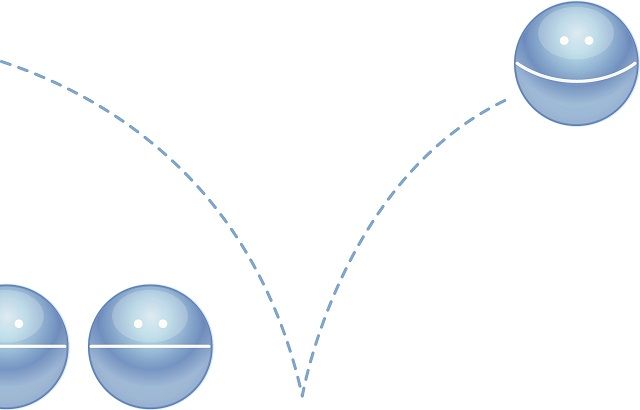The European Central Bank conspicuously didn’t lower rates as part of its response to the covid-19 crisis, in contrast to most major central banks around the world.
With rates already negative, it seemed to be a tacit admission that pushing them further into negative territory could do more harm than good.
But what does it mean for investors in European fixed income markets?
Does it put a floor on bond yields – and therefore a cap on capital gains – for the foreseeable future?
Pressure on profitability
The ECB’s experience with negative policy rates has been mixed at best.
The deposit rate has been negative since 2014 and while this may have been helpful in providing stimulus to Europe’s economy in the wake of the Eurozone crisis, policymakers have also had to wrestle with a number of unintended consequences.
Nathan Sheets, chief economist at PGIM Fixed Income, says: “Negative policy rates have put increased pressures on bank profitability.
“Negative rates have also drawn criticism for facilitating the continued existence of zombie firms, penalising savers, and sapping liquidity in short-term funding markets.
“Over and above these challenges, negative rates have also been politically contentious for the ECB, drawing fire from a range of constituencies.”
In the current crisis, Ella Hoxha, senior investment manager, global bonds, Pictet Asset Management, says that bank profitability has been the crucial element.
Banks are an important tool for recovery.
“The ECB has been far more wary of the health the bank sector profitability over the course of the past year or so.
“Without healthy banks, a region that relies heavily on banks funding businesses is not really viable.
“A combination of quantitative easing and TLTRO [targeted longer-term refinancing operations] in fact does the opposite; creates favourable borrowing rates and allows for the backdrop where banks can buy sovereign bonds and earn the carry.”
Bad news?
Few believe the ECB is likely to shift its position in the short-term. The immediate pressure to cut rates has dissipated as economies open up and start their recovery process.
This should spell bad news for European fixed income investors.
If yields are bottoming out, the prospect of capital appreciation from Eurozone government bonds appear remote in the near term.
For those with large portfolio weightings to fixed income – as is the case for many retail investors – this could be a long-term drag on their savings.
How low can you go?
However, there are circumstances in which the central bank might shift its position, notably if deflation rears its head.
Patrick Barbe, head of European Investment Grade Fixed Income at Neuberger Berman, says: “The ECB could cut rates again in case of deflation risk.
“The problem of negative rates was reduced when the ECB implemented the tiering system to bank liquidity.
“To reduce the cost for commercial banks of negative deposit rates, the central bank can increase the cash amount exemption by increasing the multiplier on their reserve amount.
“Thus, we believe the level of European yields can go lower if the inflation rate falls close to 0%.”
This is a plausible scenario: inflation across the Eurozone appears to be structurally low – policymakers have consistently failed to meet their inflation targets.
Equally, the economic fall-out from covid-19 will create deflationary pressures.
Perennial problem
Juan Valenzuela, fund manager in the fixed income team at Artemis Investment management says the average inflation in Europe over the next 10 years is likely to be below 0.9% per year.
Deflation has perennially been a problem in Europe, even if many countries appear to be recovering well from the crisis.
That said, Hoxha says that the lows in German bond yields are likely to be in the past, but equally, there is little sign of a rise in rates: “The combination of imminent sub-par growth and low inflation dynamics, together with the pace of QE by the ECB would limit any major sell offs in rates.
“We are likely to deal with the consequences of this pandemic for a lot longer and monetary policy will stay put in order to facilitate increased borrowing levels for sovereigns.”
Valenzuela agrees: “Lower yields require expectations of lower rates, which are unlikely. However, higher yields require more than the ECB not cutting rates further – something that also seems relatively unlikely to materialise.”
This puts European fixed income in a holding pattern.
At a price
However, Valenzuela sees some differentiation between individual bonds.
The price of longer-dated bonds will be governed by supply-side dynamics – government issuance and central bank purchases and the term premium – the extra yield above interest rate expectations to compensate for duration and inflation risks.
Any normalisation of inflation expectations, elevated supply to fund deficits, and slower QE purchases, will translate into higher yields and steeper curves.
However, he believes there is a lid on rises in shorter-dated bonds while inflation expectations remain low.
Valenzuela concludes that while there is limited room for government bonds yields to move lower in the current situation, investors only need to look at Japan to appreciate that this doesn’t necessarily mean that they will move higher.
The biggest problem for fixed income investors may be the opportunity cost.







